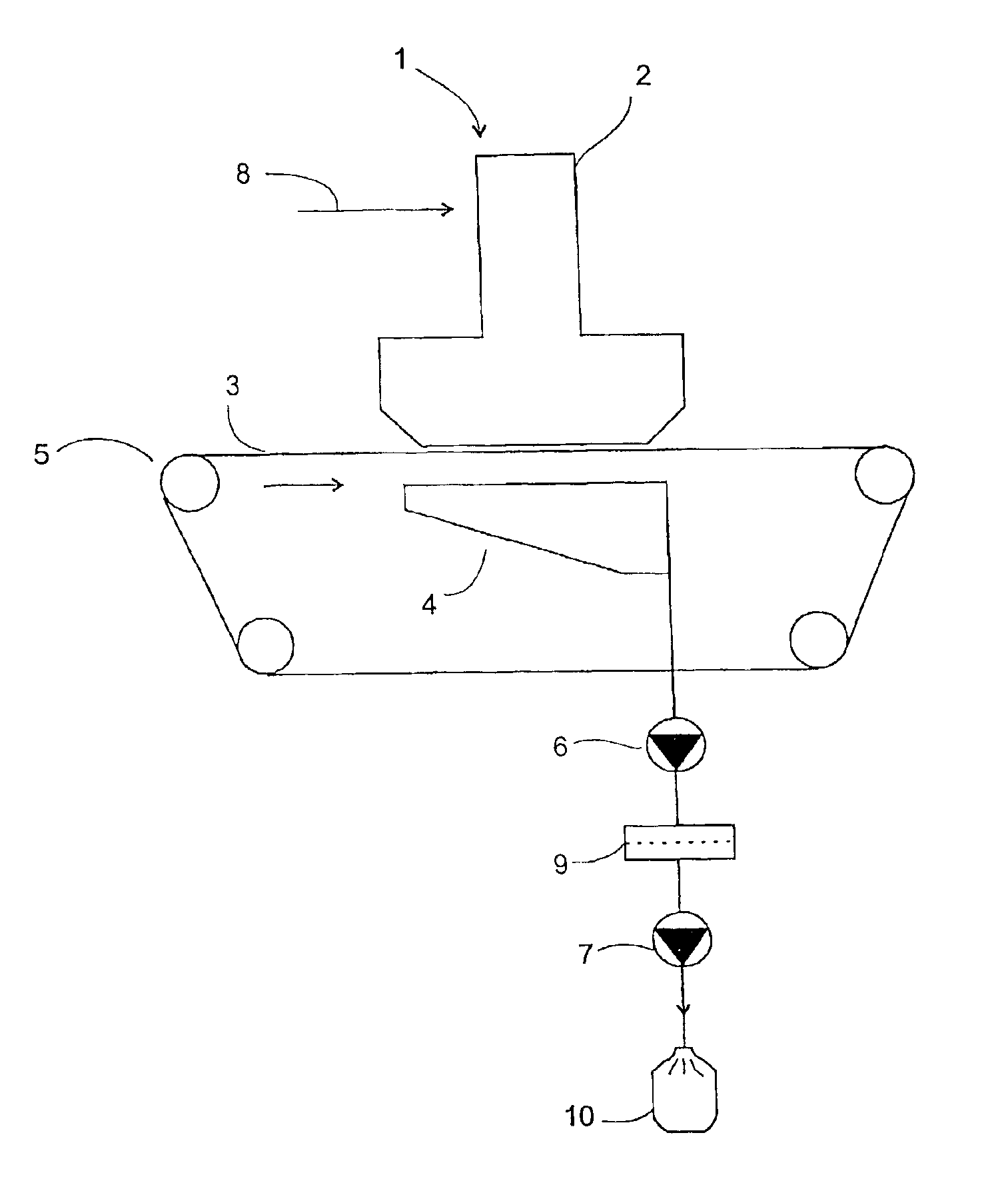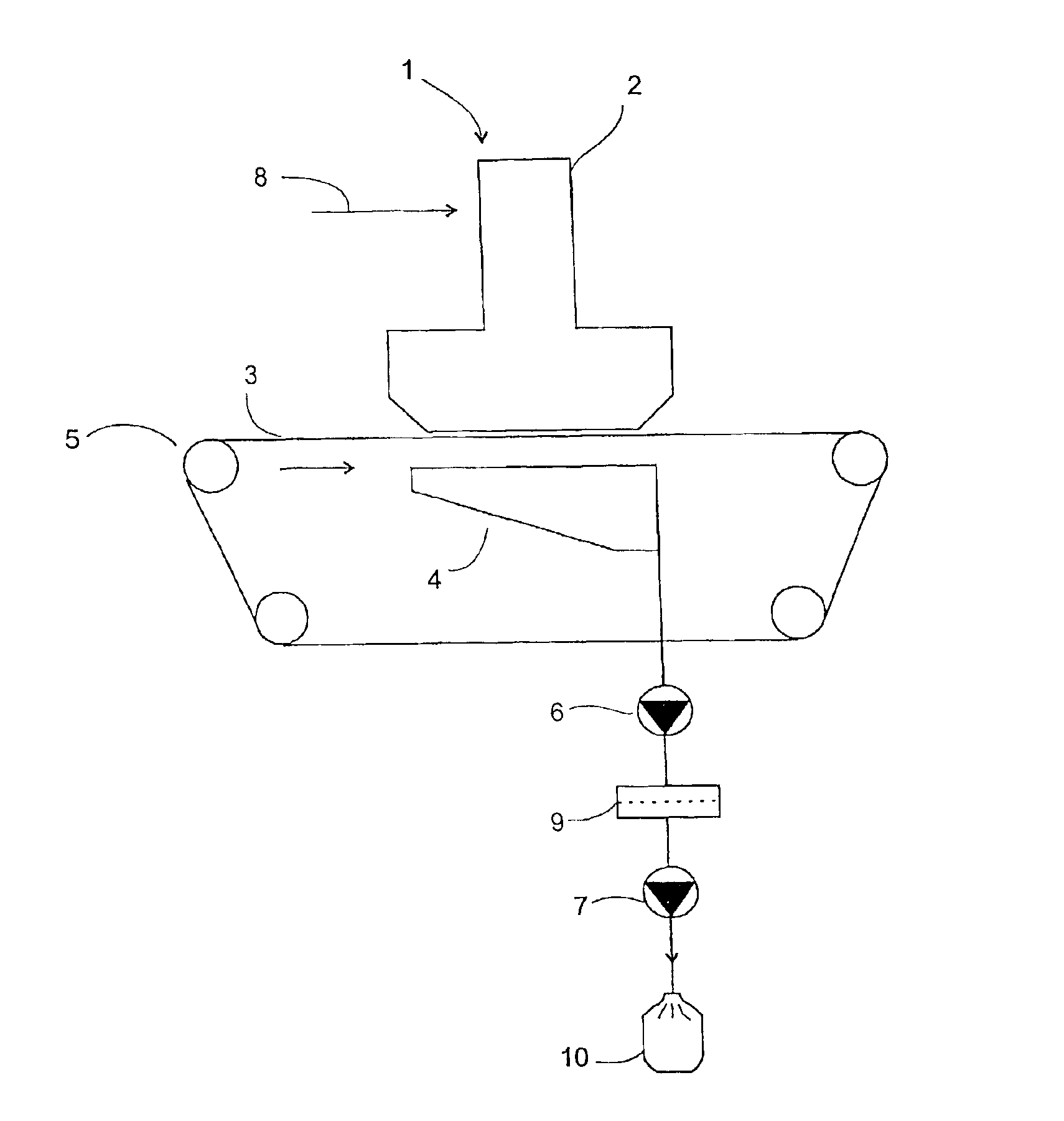Plant for removing fines from fiber fluff
a technology for fines and fiber fluff, which is applied in the field of fines removal plants for fiber fluff, can solve the problems of reducing the quality of air-laid webs, complex filters having a number of filtering steps, and expensive stop-down of the total plant, and achieves the effect of separating in a simple fine from paper flu
- Summary
- Abstract
- Description
- Claims
- Application Information
AI Technical Summary
Benefits of technology
Problems solved by technology
Method used
Image
Examples
Embodiment Construction
[0026]FIG. 1 shows a forming station 1 which mainly consists of a forming head 2 placed above a forming wire 3 and a suction box 4 placed below the forming wire. The forming wire runs, during operation, around four rolls 5 in the direction indicated by the arrow. A differential pressure is generated over the forming wire by means of first and second vacuum fans 6, 7 which are connected to the suction box 4.
[0027]Fibers from a supply of fibers (not shown) are via a channel 8 carried into the forming head in a flow of air. The fibers are by means of the differential pressure deposited in a layer of fluff onto the forming wire.
[0028]The fluff normally contains fines, which are small fiber particles on the order of 10 to 50μ. For removing the fines from the fluff the mesh count of the forming wire and the differential pressure between the forming head and the suction box are chosen such that mainly only fines contained in the fluff are allowed to pass the forming wire.
[0029]The mesh cou...
PUM
| Property | Measurement | Unit |
|---|---|---|
| pressure | aaaaa | aaaaa |
| differential pressure | aaaaa | aaaaa |
| weights | aaaaa | aaaaa |
Abstract
Description
Claims
Application Information
 Login to View More
Login to View More - R&D
- Intellectual Property
- Life Sciences
- Materials
- Tech Scout
- Unparalleled Data Quality
- Higher Quality Content
- 60% Fewer Hallucinations
Browse by: Latest US Patents, China's latest patents, Technical Efficacy Thesaurus, Application Domain, Technology Topic, Popular Technical Reports.
© 2025 PatSnap. All rights reserved.Legal|Privacy policy|Modern Slavery Act Transparency Statement|Sitemap|About US| Contact US: help@patsnap.com


